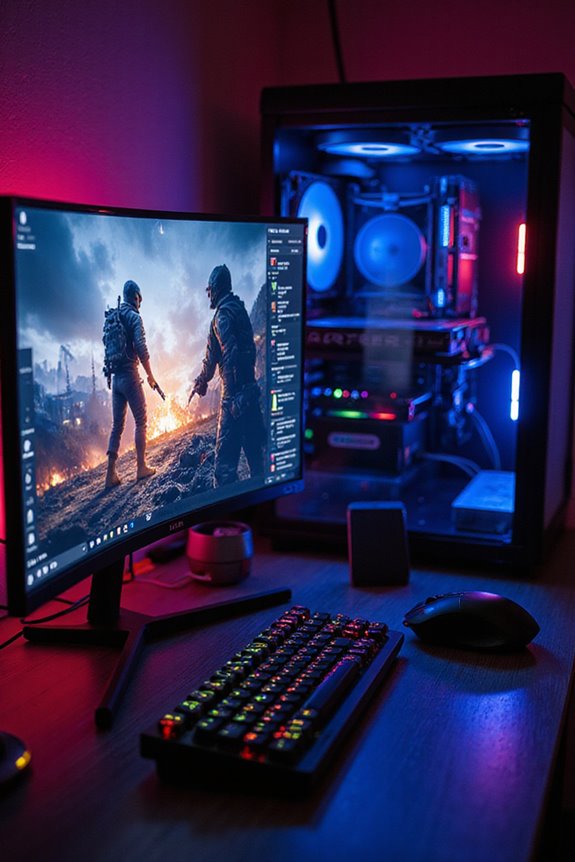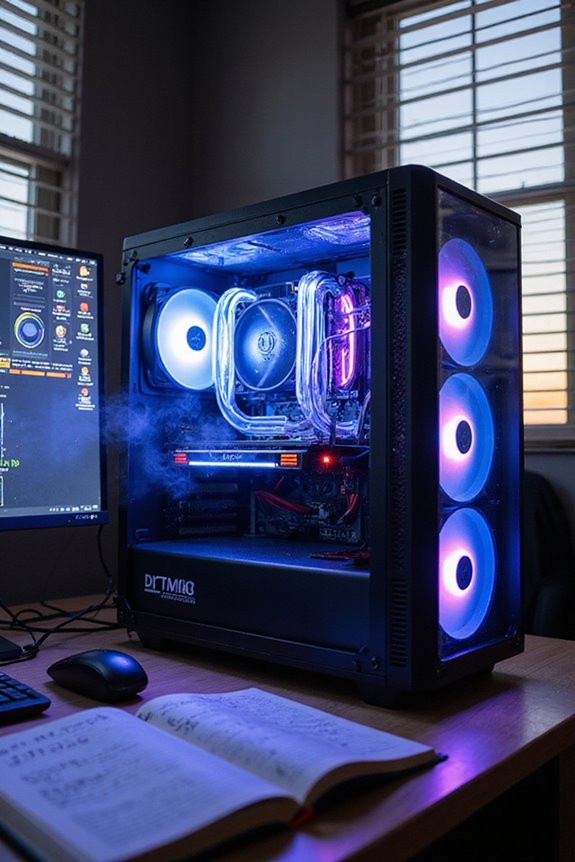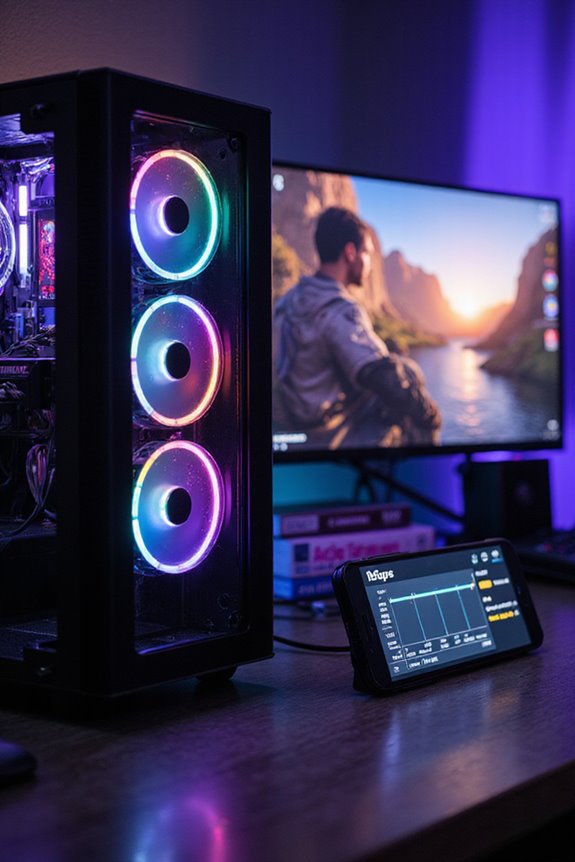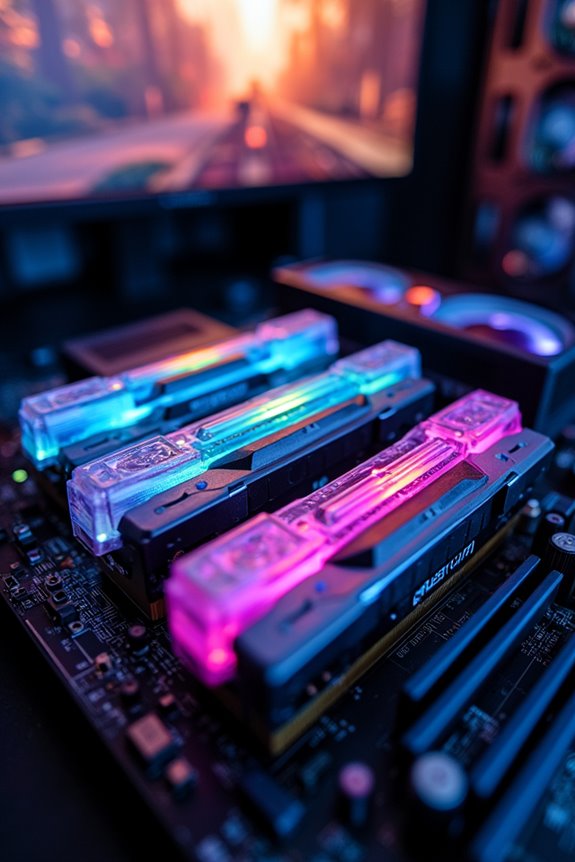HDR gaming definitely ups the visual game. With enhanced brightness, deeper blacks, and vibrant colors, it immerses you in a way standard displays can’t. Sure, high-end monitors can set you back over $1,000, and not all games support HDR, but the experience during supported titles is fantastic. Just consider your hardware and room setup, as these play an essential role. Interested to uncover more about whether HDR is a necessity or not? Stick around!
Key Takeaways
- HDR technology significantly enhances visual realism with a broader range of brightness and color, creating a more immersive gaming experience.
- The use of dynamic metadata in formats like HDR10 and Dolby Vision improves color accuracy and depth, making gameplay more engaging.
- High refresh rates and adaptive brightness in HDR monitors reduce motion blur and eye fatigue, improving comfort during long gaming sessions.
- While HDR monitors can be costly and require compatible hardware, the enhanced visuals may justify the investment for serious gamers.
- However, not all games support HDR, which can limit its benefits, making it seem like an unnecessary luxury for casual players.
Understanding HDR Technology
When you plunge into the world of HDR technology, you quickly realize it’s all about elevating your visual experience. HDR, or High Dynamic Range, enhances images by showcasing a broader range of brightness and color. You’ll notice that the contrast between bright highlights and deep shadows becomes more pronounced, breathing life into what you see. Formats like HDR10 and Dolby Vision utilize dynamic metadata to fine-tune brightness and color, making everything look more realistic. Of course, you’ll need compatible hardware—a decent graphics card and HDR-capable monitor—if you want to experience these improvements. While HDR can require some setup, the payoff is a more vibrant and immersive visual journey that makes gaming and watching content feel more engaging.
The Immersive Experience of HDR in Gaming
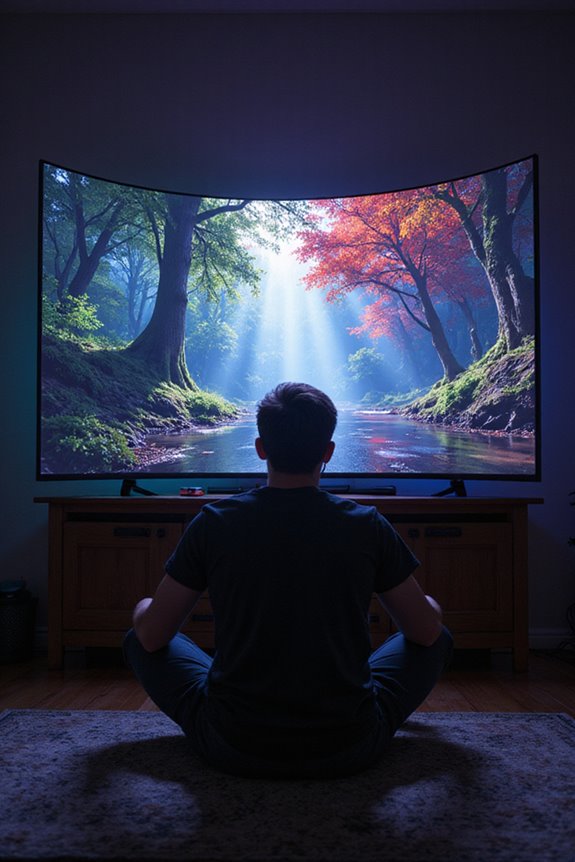
As I plunge into an HDR gaming experience, it’s clear that this technology transforms the way I perceive virtual worlds. The expanded dynamic range reveals deeper blacks and brighter highlights, mimicking natural vision. I can see vibrant colors and smooth changes, enhancing the depth and realism of each scene. Lighting effects feel more genuine, pulling me deeper into the game. With HDR-enabled displays, I notice less eye fatigue during those marathon sessions—thanks to adaptive brightness that suits my surroundings. It’s like I’m stepping into a living painting, where every detail matters. While HDR isn’t without its quirks, the immersive experience it provides makes every virtual adventure feel more alive and engaging. High refresh rates, such as 240Hz refresh rate, significantly enhance performance by reducing motion blur and minimizing screen tearing, further improving the overall gaming experience.
Evolution of HDR Technology in Gaming

The evolution of HDR technology in gaming has been quite a journey, especially since it’s reshaped how we experience visuals. Early on, HDR emerged with computer graphics advancements in the early 2000s, marking a significant leap from standard dynamic range displays. While SDR typically uses 8-bit color, HDR dazzles with 10-bit or higher, enabling richer hues and contrasts. As graphics cards like the ATI Radeon 9700 supported DirectX 9.0, we began to see serious HDR potential. With the latest consoles, HDR is now seamlessly integrated, offering consistent experiences across games like “God of War.” However, challenges remain, like hardware requirements and calibration issues that can be a bit tricky. Still, it’s exciting to see where HDR will take us next!
Top HDR Gaming Monitors on the Market
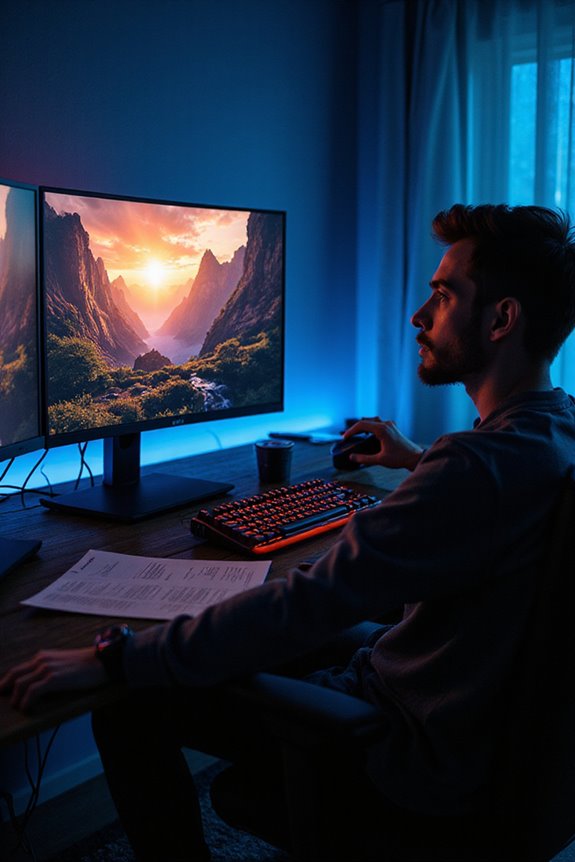
Finding the right HDR gaming monitor can truly elevate your gaming experience. Take the Asus ROG Swift PG27UCDM; it boasts a high-performance HDR display that pulls you into immersive worlds. If you’re a console gamer, the Alienware AW3225QF is hard to beat, offering 4K resolution with a stunning 240 Hz refresh rate and Dolby Vision support. For enhanced visuals, consider the HP Omen 32 OLED, which delivers vibrant HDR through its OLED technology. The LG UltraGear 32GS95UE impresses with its fast pixel response and strong HDR capabilities, while the MSI MPG 321URX stands out with its QD-OLED panel for low latency gameplay. Each of these monitors brings something unique to the table, making your choice depend on your specific needs.
Compatibility and Integration for Optimal Experience
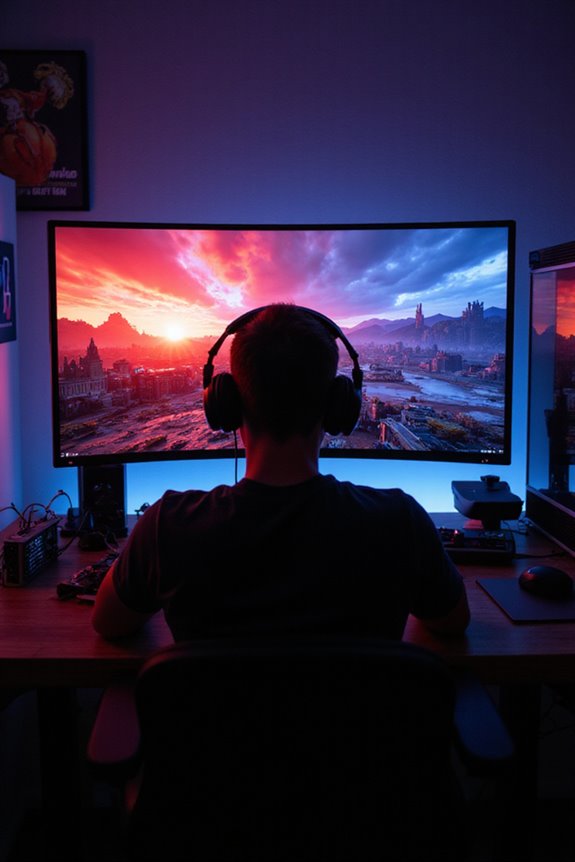
When you plunge into HDR gaming, ensuring compatibility and integration across your system is vital for a seamless experience. You’ll need at least a 7th Generation Intel Core processor and a compatible GPU like NVIDIA’s GTX 10 series or AMD’s Radeon 500 series. Your monitor should boast a peak brightness of 400 cd/m², 10-bit color depth, and 90% DCI-P3 coverage to truly appreciate HDR visuals.
Don’t forget the importance of current drivers; they’re essential for peak performance. Furthermore, technologies like G-Sync and FreeSync can elevate your gaming by providing smooth variable refresh rates. So, make sure your setup checks all these boxes; trust me, it’s worth the effort for that richer, more immersive experience.
Economic Factors and Practical Considerations
As I immerse myself in HDR gaming, it’s clear that economic factors and practical considerations play a significant role in shaping the experience. High-end monitors, like the ASUS ROG Swift OLED PG32UCDM, can easily cost over $1,000, and that’s just the beginning. To enjoy HDR, you need a powerful processor and graphics card, which adds to the expense. Plus, not all games support HDR, limiting your options. Setting it all up isn’t a walk in the park either; you’ll need to tweak gamma and brightness settings. And let’s not forget, good HDR performance often depends on the lighting in your room. HDR technology can increase energy usage, impacting overall cost and sustainability. It’s a balancing act between cost and quality, but when done right, the visuals are stunning.
The Debate: Luxury vs. Necessity in HDR Gaming
The discussion around HDR gaming often feels like a tug-of-war between luxury and necessity. On one hand, HDR enhances visuals with richer colors, deeper blacks, and improved contrast, creating a more immersive experience. It’s almost like stepping into a vibrant painting. But here’s the catch: not all games are optimized for HDR, and the hardware costs can be challenging. Some gamers argue it’s an unnecessary upgrade, especially when many titles won’t fully utilize its potential. Plus, technical issues like tone mapping can pop up, complicating the experience. Ultimately, while HDR can elevate your gameplay, whether it’s essential or just a luxury really depends on your preferences and the games you love.
Future Prospects of HDR in the Gaming Community
HDR gaming isn’t just a luxury anymore; it’s paving the way for exciting advancements that can shape the future of how we play. With brighter OLED displays and mini-LED tech on the horizon, HDR visuals are set to get even more stunning. As cross-platform games adopt HDR, we’ll enjoy richer shared experiences, making gaming even more connecting.
Cloud gaming might soon integrate HDR, offering high-quality visuals on any device, which is pretty cool. Plus, with AI-driven enhancements, HDR could become even more realistic. Sure, costs are still a factor, but as competition grows among brands like ASUS and Dell, prices will likely drop. It’s an exciting time, and I can’t wait to see where HDR takes us next.
Frequently Asked Questions
How Does HDR Affect Battery Life in Portable Gaming Devices?
When I play HDR games on my portable device, I notice the battery drains faster. It’s a trade-off between stunning visuals and shorter gaming sessions, so I often adjust settings to balance both.
Are There Any Health Concerns Related to HDR Gaming?
You know that feeling when you binge-watch your favorite show? Well, HDR gaming can bring that joy, but it also poses risks like eye strain and sleep disruption. I worry it might affect my health long-term.
Can HDR Be Used in Non-Gaming Applications?
Absolutely, I believe HDR can elevate non-gaming applications too. Whether it’s photography, film, or even AR/VR, the enhanced colors and contrasts make everything feel more immersive and lifelike, enriching our visual experiences in delightful ways.
What Are the Best Settings for HDR Gaming on Consoles?
When I immerse myself in HDR gaming, I cherish those vibrant colors exploding on screen. I find calibrating brightness in a dark room essential, ensuring every detail shines bright without losing its essence. Trust me, it’s worth it!
Do HDR Monitors Require Special Cables for Optimal Performance?
When it comes to HDR monitors, I’ve found they don’t need special cables, just ones that meet the right bandwidth. Trust me, using high-quality cables really makes a difference in the visual experience.


